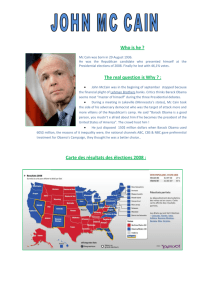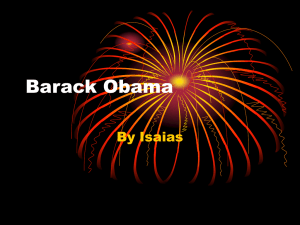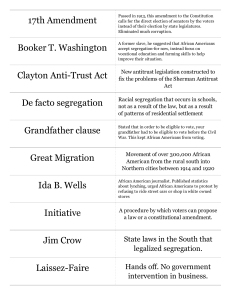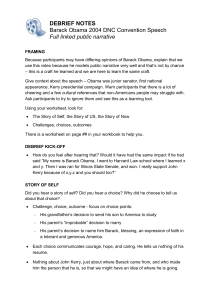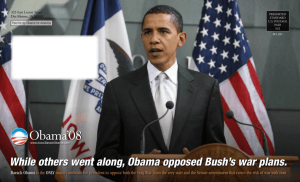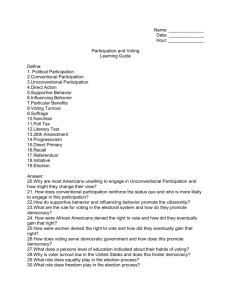Writing for Social Change
advertisement
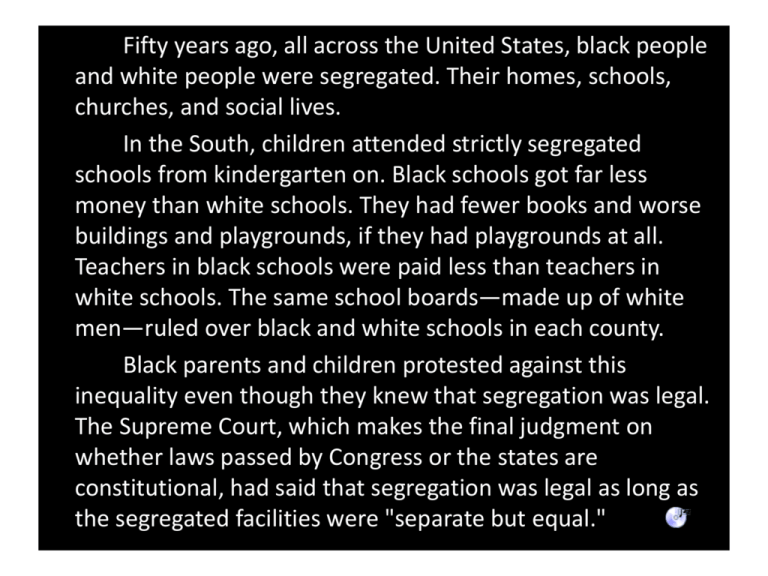
Fifty years ago, all across the United States, black people and white people were segregated. Their homes, schools, churches, and social lives. In the South, children attended strictly segregated schools from kindergarten on. Black schools got far less money than white schools. They had fewer books and worse buildings and playgrounds, if they had playgrounds at all. Teachers in black schools were paid less than teachers in white schools. The same school boards—made up of white men—ruled over black and white schools in each county. Black parents and children protested against this inequality even though they knew that segregation was legal. The Supreme Court, which makes the final judgment on whether laws passed by Congress or the states are constitutional, had said that segregation was legal as long as the segregated facilities were "separate but equal." Separate and Unequal Broken School Bus in Louisa County, Virginia Separate and Unequal Segregated School in Louisa County, Virginia An African American School House Summerville, SC 1938 This photograph shows the condition of many African American schools in the first decades of the twentieth century. Many states simply did not allocate enough funds to provide "equal" schools in the separate black schools. In South Carolina, the resulting inadequate condition for black children led to the Briggs v. Elliot case in 1954. The Briggs case would become one of the five included in the Brown decision. Segregated Classrooms The 1954 United States Supreme Court decision in Oliver L. Brown et.al. v. the Board of Education of Topeka (KS) et.al. is among the most significant judicial turning points in the development of our country. Originally led by Charles H. Houston, and later Thurgood Marshall and a formidable legal team, it dismantled the legal basis for racial segregation in schools and other public facilities. Through My Eyes In November 1960, six-year-old Ruby Bridges Hall became the first African American child to desegregate an elementary school. Although she only lived a few blocks from the William Frantz Elementary school in New Orleans, Louisiana. Marshals had to escort Ruby because of angry segregationist mobs that gathered in front of the school. For an entire year, she was the only student in her class since white parents pulled their children from the school in protest. She wrote about her experiences in her book THROUGH MY EYES. Ruby Bridges & Sasha Obama A Bus of Our Own More than anything, Mable Jean wants to go to school. She has to walk five miles to get there, though, and her papa told her that if she can't keep up, she'll have to wait another year. Freedom on the Menu In 1960 four freshmen from North Carolina Agricultural and Technical College in Greensboro strolled into the F. W. Woolworth store and quietly sat down at the lunch counter. They were not served, but they stayed until closing time. The next morning they came with twentyfive more students. Two weeks later similar demonstrations had spread to several cities, within a year similar peaceful demonstrations took place in over a hundred cities North and South. At Shaw University in Raleigh, North Carolina, the students formed their own organization, the Student Non-Violent Coordinating Committee (SNCC, pronounced "Snick"). The students' bravery in the face of verbal and physical abuse led to integration in many stores even before the passage of the Civil Rights Act of 1964. 1960 - 1963 Sit-ins, swim-ins, read-ins, pray-ins, marches, and other protests erupt across the South at segregated restaurants, swimming pools, libraries, churches... In Harlem and many other northern communities, Movement supporters picket Woolworths and other chain stores to support the southern sit-ins. Vending-machine in Jackson, Tennessee Images of Jim Crow Freedom on the Menu The 1960 Civil Rights sit-ins at the Woolworth's lunch counter in Greensboro, North Carolina, are seen through the eyes of a young Southern black girl. More Images of Jim Crow Segregated drinking fountains in the County Courthouse, Albany, Georgia.. White Socks Only She had misunderstood this sign thinking "whites only' meant White socks only. Her action of drinking from this fountain results in a town which begins to make changes. Imagine This…. Two-year old Barack Obama and his mom live in this town. One day while they are in town, Little Barack gets thirsty. Which public drinking fountain would little Barack’s mother have held him up to? White for her race or Colored for his? The segregation of water fountains was based on the way you looked. Two-yearold Barack Obama, future President of the United States, would have been judged Colored and thus too contaminated with Blackness to drink from the White fountain. Voting Rights: The Last Stronghold The twentieth century brought passage of the weak Civil Rights Act of 1957, the more forceful Civil Rights Act of 1964, and the Voting Rights Act of 1965. The 1965 Voting Rights Act created a significant change in the status of African Americans throughout the South. The Voting Rights Act prohibited the states from using literacy tests, interpreting the Constitution, and other methods of excluding African Americans from voting. Prior to this, only an estimated twenty-three percent of voting-age blacks were registered nationally, but by 1969 the number had jumped to sixty-one percent. "Signing the Voting Rights Act," August 6, 1965 Voting Rights Act’s Impact in 2008 The Voting Rights Act has been either substantively amended and/or reauthorized in 1970, 1975, 1982, and 1992, and the non-permanent provisions were amended again in August 6, 2007. There were several unique aspects about the 2008 election. This election was the first time in U.S. history that an African American was elected President, and the first time a Roman Catholic was elected Vice President. It was also the first time two sitting senators ran against each other. It was the first election in 56 years that neither an incumbent president (Bush was barred from seeking a third term by the Twenty-second Amendment) nor vice president ran. Also, voter turnout for the 2008 election was the highest in at least 40 years. http://en.wikipedia.org/wiki/United_States_presidential_election,_2008 Before He Announced His Candidacy "The teenagers and college students who left their homes to march in the streets of Birmingham and Montgomery; the mothers who walked instead of taking the bus after a long day of doing somebody else's laundry and cleaning somebody else's kitchen -- they didn't brave fire hoses and Billy clubs so that their grandchildren and their great-grandchildren would still wonder at the beginning of the 21st century whether their vote would be counted; whether their civil rights would be protected by their government; whether justice would be equal and opportunity would be theirs.... We have more work to do." ~ Barack Obama, Speech at Howard University, September 28, 2007 Why did we need a Civil Rights Movement? President Barack Obama has spent much of his career fighting to strengthen civil rights as a civil rights attorney, community organizer, Illinois State Senator, U.S. Senator, and now as President. Whether promoting economic opportunity, working to improve our nation's education and health system, or protecting the right to vote, President Obama has been a powerful advocate for our civil rights. Welcome Mr. President ... We’ve Been Waiting For You! Celebrate the Inauguration RAFT Role - Reporter Audience - The World Format – Multi-media (eZine, magazine cover, powerpoint, poster, blog, moviemaker, etc.) Task - You are the reporter. Pretend that you are covering the inauguration of the 44th president. The coverage will be aired or publicized for viewers who may not have coverage. Use visuals, audio or text, hyperlinks. Reflection… Go back to: www.wifi707.blogspot.com Leave a comment on the blog: Why did America need a Civil Rights Movement? Did it contribute to the change that we see taking place in our country today?
